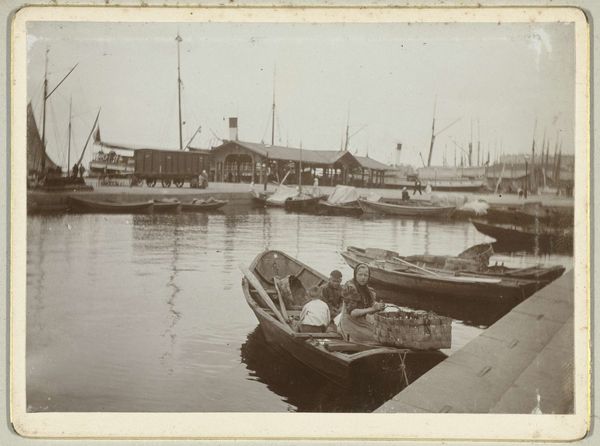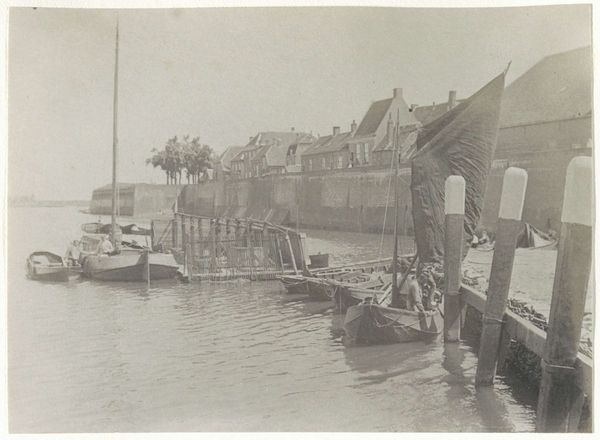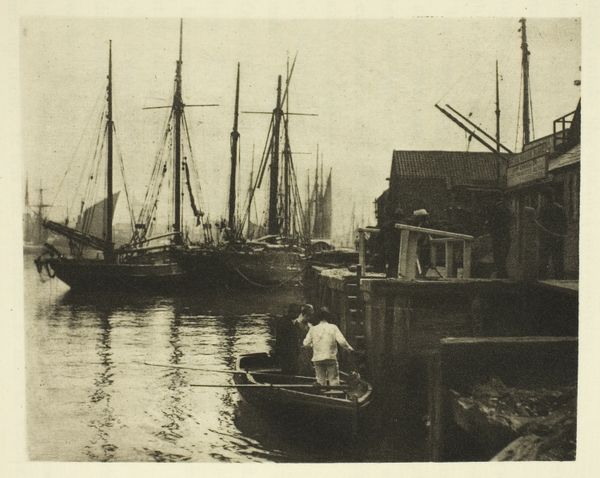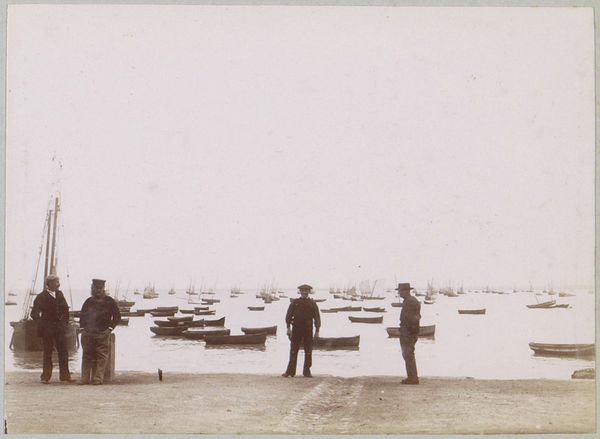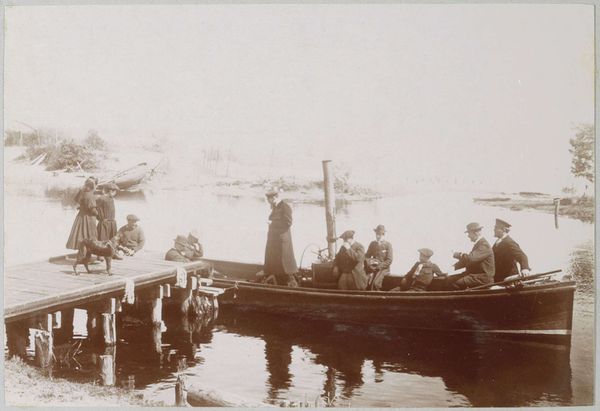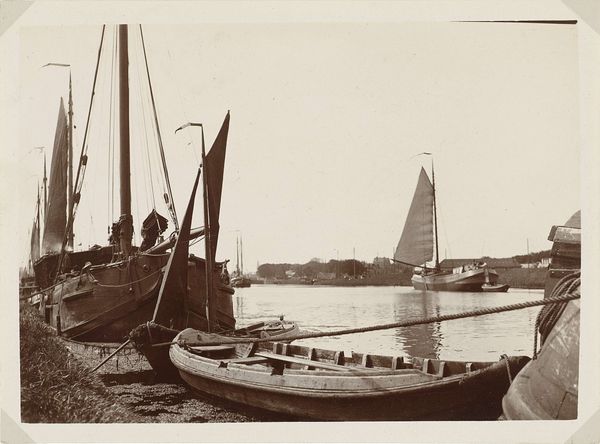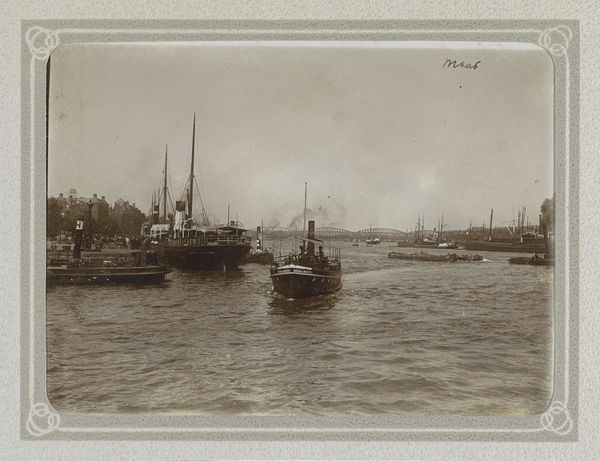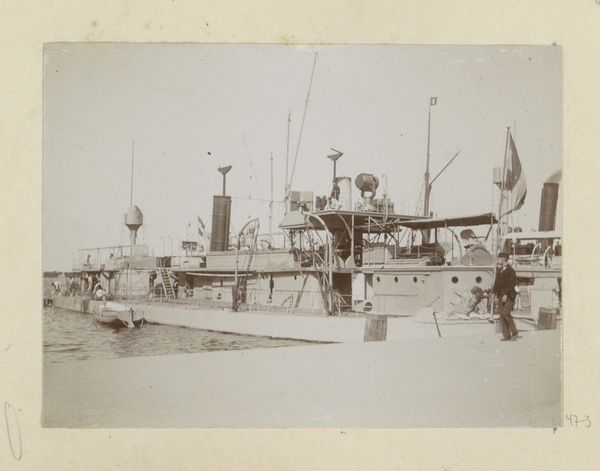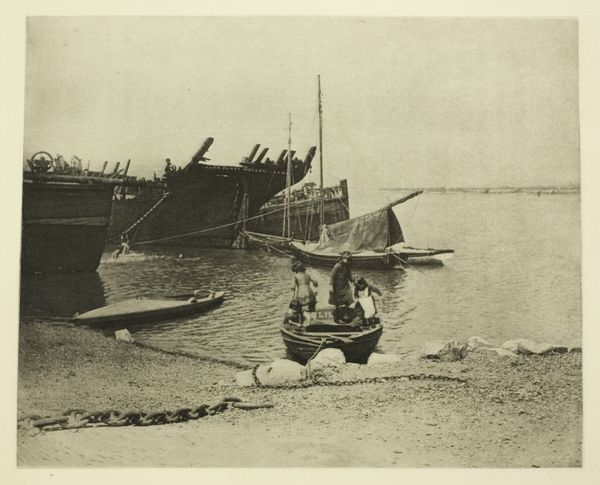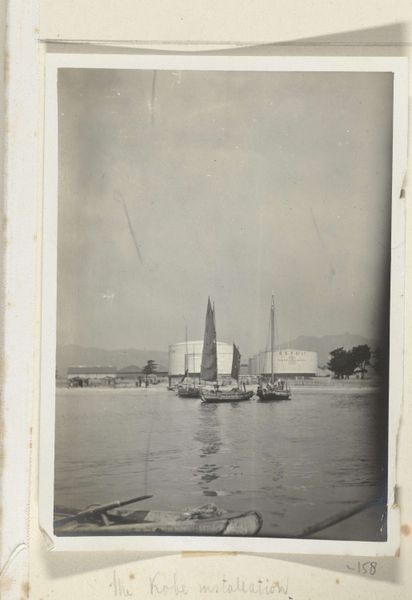
print, photography, gelatin-silver-print
# print
#
landscape
#
archive photography
#
photography
#
historical photography
#
gelatin-silver-print
#
cityscape
Dimensions: height 100 mm, width 74 mm, height 363 mm, width 268 mm
Copyright: Rijks Museum: Open Domain
Editor: This gelatin-silver print, "Canton Motorlaunch A.P.C.," by Geldolph Adriaan Kessler, was created in 1908 and now resides at the Rijksmuseum. The photograph captures a bustling waterfront scene, full of boats of varying types. I’m struck by the textures in the water, and the detail in the built environment behind the boats, as well as the staging, with the workers contrasted to the passengers on board. What strikes you most about this image? Curator: The most salient detail is its manifestation as a gelatin-silver print itself. The photographic print isn't just an image, it's an object, made through specific industrial processes involving labor and materials like gelatin and silver salts. Consider the role of photography at the time in documenting and, perhaps, even glorifying industrial progress in China, focusing on new technologies such as this motorized boat that facilitated trade. The photographer likely used commercially available photographic paper; what social and economic contexts do you believe made this mass production and commodification of image-making possible at the turn of the century? Editor: That's an insightful perspective. I hadn't considered the implications of photography becoming more widely accessible as a material process rather than just focusing on the content of the image. Is it the tension between labor and technology, as documented by that material accessibility, what intrigues you most? Curator: Exactly! Think about who is being photographed and by whom. The material conditions and consumption are inseparable. What can be implied by the production of imagery and its consumption to wider audiences? And in its travel to museums or private collections across the world? It really transforms our perception of history. Editor: I never really looked at historical photos this way before. I appreciate understanding how the material conditions of the print and labor involved in its production can tell us so much about the time and place. Curator: Indeed. Looking beyond the aesthetic value reveals historical and social threads otherwise unnoticed, allowing a deeper appreciation for the complexities of visual art and culture.
Comments
No comments
Be the first to comment and join the conversation on the ultimate creative platform.
